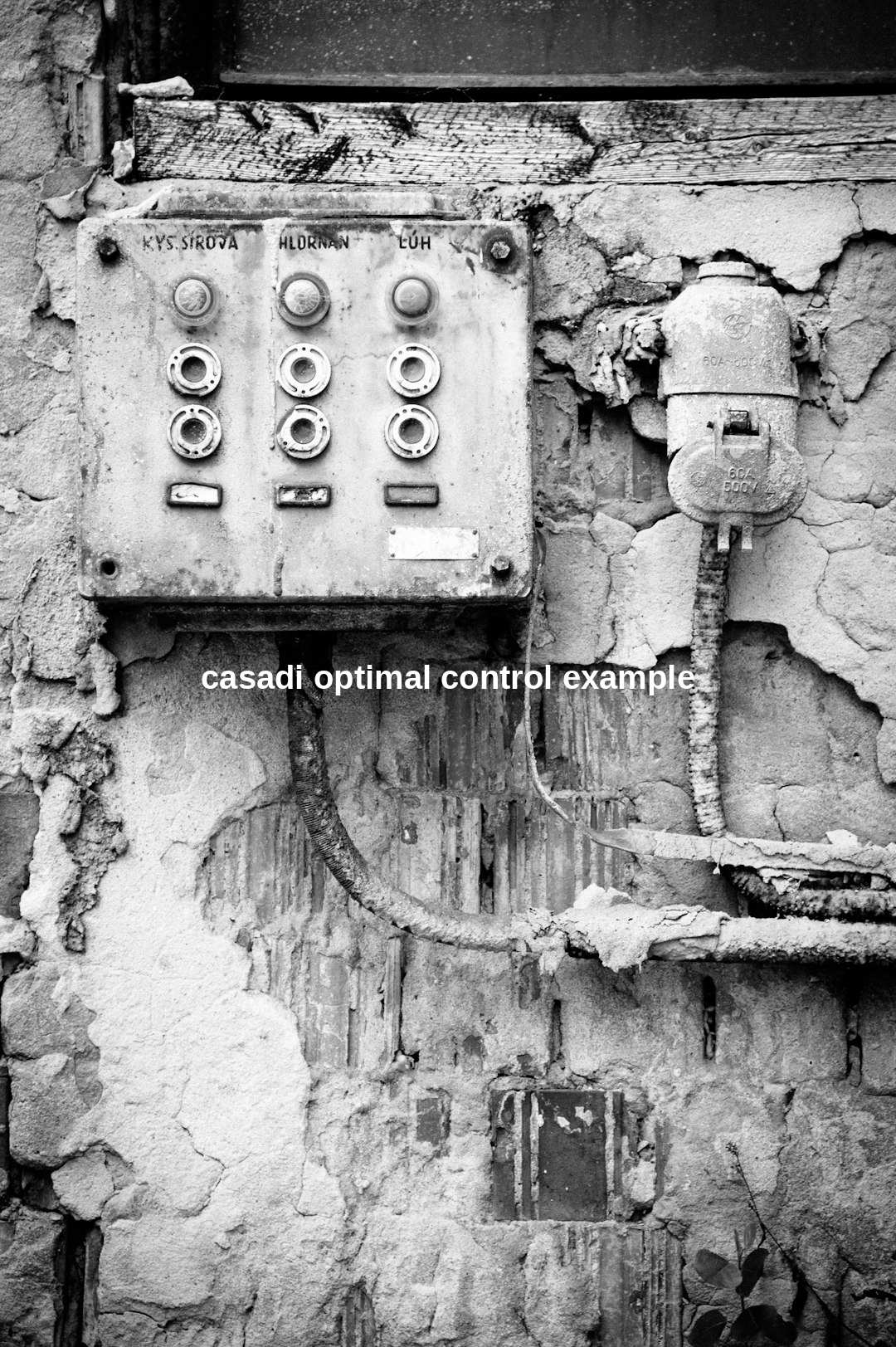In the field of engineering and applied sciences, the quest for efficiency often boils down to finding optimal solutions to complex problems. This is where optimal control theory comes into play, providing a rigorous framework for determining the best course of action for dynamic systems. To effectively translate theoretical optimal control formulations into practical solutions, computational tools are necessary. One such powerful tool is CasADi, a software framework designed for algorithmic differentiation and the solution of numerically demanding problems such as those found in optimal control. In this context, showcasing a casadi optimal control example provides invaluable insights into the application of CasADi in real-world challenges.
| Aspect | Details |
|---|---|
| Objective | Demonstration of CasADi mechanics through an optimal control problem example |
| Problem Domain | Dynamic systems in engineering, economics, robotics, etc. |
| Key Features of CasADi | Algorithmic differentiation, numerical optimization, and efficient computation |
| Usefulness | Translation of complex mathematical models into actionable, optimized control strategies |
Understanding Optimal Control and CasADi
Optimal control theory is the mathematical study of trajectories and control functions that optimize the performance of a dynamic system. It encompasses the derivation of control laws that can make a system behave in the most efficient manner with respect to some defined criterion. This criterion is often expressed as a cost functional that needs to be minimized or maximized, making optimal control a staple in various fields such as aerospace, automotive, robotics, and finance.
The Foundations of Optimal Control
For any given system, the evolution of states over time is governed by differential or difference equations. Optimal control involves finding a control sequence that will steer the system from an initial state to a final desired state while optimizing some performance index. This typically involves solving complex Hamiltonian equations, necessitating computational methods to handle the mathematics involved.
CasADi stands out as a particularly adept tool for tackling these calculations. It is a symbolic framework that automates the calculation of gradients and Hessians via algorithmic differentiation which is of paramount importance in solving optimal control problems. CasADi’s ability to interface with powerful numerical solvers enables it to process and solve intricate optimization problems efficiently. The coupling of its features with its user-friendly Python interface makes it accessible not just to mathematicians but also to engineers and researchers who may not be experts in optimal control theory.
Delving into a detailed casadi optimal control example helps illuminate the process of moving from the abstract mathematics of optimal control to the concrete steps involved in finding a solution using CasADi. It showcases the practical application of theoretical principles and provides a platform for understanding the nuances involved in the optimal control of real systems.
Transitioning from Theory to Practice: Solving an Authentic Optimal Control Problem

The transition from theory to practice in the realm of optimal control involves applying principles and algorithms to real-life systems with the intention of optimizing their behavior. This transition requires a precise model of the system and a clear definition of the performance criteria.
Setting Up the Optimal Control Problem
A typical optimal control problem formulation starts with clearly defining the system dynamics, control objectives, and any constraints that might be present. The system dynamics are often represented by differential equations, which describe how the state of the system evolves over time given certain inputs or control actions.
The essential concept in a casadi optimal control example is translating the mathematical description of a system’s dynamics and objectives into a form that can be processed by CasADi, thus bridging the gap between theoretical optimal control and real-world application.
Implementing the Problem in CasADi
After the initial setup, the next step involves implementing the problem in CasADi’s environment. This involves defining the variables, equations, and any additional functions needed to describe the system’s behavior accurately. CasADi’s syntax and functions are designed to be intuitive for users familiar with mathematical formulation of optimal control problems.
The Mechanics of CasADi: Key Methods and Tools
CasADi is equipped with a variety of methods and tools essential for solving optimal control problems. These include automatic differentiation, integrators for ordinary differential equations, and interfaces to various numerical optimization solvers.
Understanding CasADi’s Core Features
Automatic differentiation in CasADi allows for the efficient computation of Jacobians and Hessians, which are critical for gradient-based optimization algorithms. This feature is particularly important for optimal control problems where the gradient information must be accurate and computationally efficient.
The power of CasADi lies in its core ability to automatically differentiate complex functions and facilitate the numerical solution of optimal control problems with high efficiency and accuracy.
Numerical Optimization and Solver Integration
Moreover, CasADi’s integration with a broad range of numerical solvers, such as IPOPT (Interior Point OPTimizer) and SNOPT (Sparse Nonlinear OPTimizer), provides users with the flexibility to choose the most appropriate solver for their specific problem. These solvers are used to find the optimal control inputs and trajectories for the defined system.
From Mathematical Models to Real-World Applications
While CasADi showcases its strength in addressing theoretical problems, where it truly shines is in its application to real-world problems, where models are complex and solutions must be practical and feasible.
Applying Optimal Control to Practical Scenarios
Real-world applications of optimal control involve considerations such as noise, disturbances, non-linearities, and model inaccuracies. CasADi’s adaptable architecture allows for the incorporation of these real-world phenomena into the optimal control framework, providing a robust platform for designing control systems that can withstand the complexities of actual operational environments.
A casadi optimal control example demonstrates CasADi’s versatility in accommodating various complexities of real-world systems while providing solutions that are not only theoretically optimal but also practically viable and implementable.
Success Stories in Industry and Research
Success stories of using CasADi range from robotics, where precise motion control is essential, to aerospace, where fuel efficiency and trajectory optimization are critical. In each case, CasADi has been instrumental in taking the theoretical foundations of optimal control and turning them into actionable control strategies that meet the stringent demands of the physical world.
Conclusion: The Path Forward with CasADi in Optimal Control
In the pursuit of designing efficient and robust control systems, CasADi emerges as a pivotal tool that bridges the analytic rigor of optimal control theory with practical application. Its ability to translate complex mathematical formulations into computationally tractable problems means that researchers and practitioners can now approach previously intractable challenges with confidence. The future of optimal control lies in the further integration of tools like CasADi into a diverse range of applications, expanding the frontiers of what is achievable with dynamic systems.
The path forward with CasADi in optimal control highlights a future where computational tools and advanced algorithms will keep driving innovations across different fields, illustrating the significance of examples such as the casadi optimal control example in practical applications.
- CasADi is an invaluable tool for solving complex optimal control problems, effectively bridging the gap between theory and practice.
- It allows for the efficient computation of gradients and Hessians, which are critical for the optimization process.
- The framework is equipped with automatic differentiation and interfaces to various numerical optimization solvers, enhancing its versatility.
- CasADi facilitates the numerical solution of optimal control problems with high efficiency and accuracy, making it accessible to both experts and non-specialists.
- Practical applications of CasADi demonstrate its adaptability to real-world scenarios, handling complexities that include non-linearities and model uncertainties.
- The success stories of CasADi span across various industries such as robotics and aerospace, proving its effectiveness in optimizing real-world control systems.
- As computational tools evolve, CasADi is expected to play a crucial role in advancing the field of optimal control and expanding its application into new and innovative areas.


